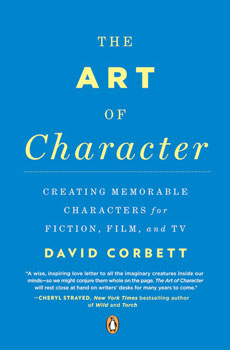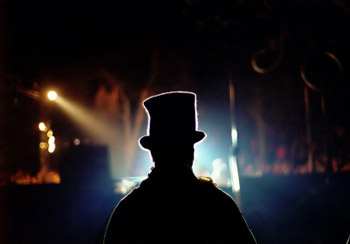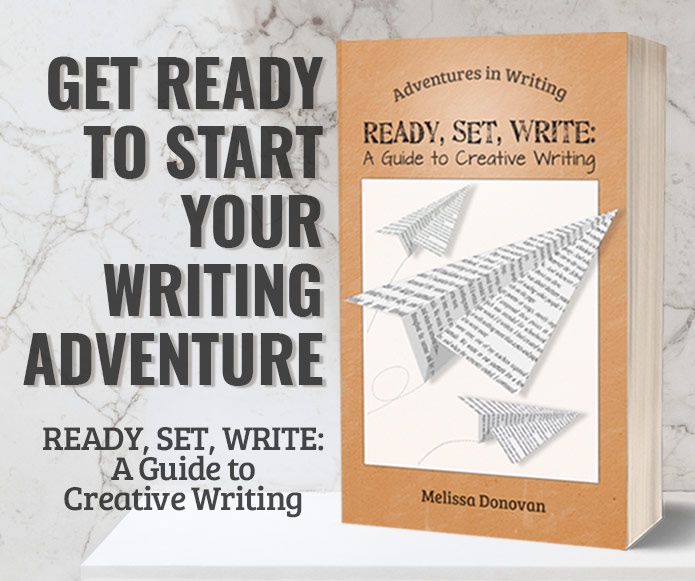This post contains affiliate links that earn commissions for this website from qualifying purchases.
Please welcome David Corbett, author of The Art of Character, with a guest post that explores common problems with protagonists in fiction writing.
Catch them in an unguarded moment and many writers will confess that villains and secondary characters are much easier to write than protagonists.
One sees the problem in not a few books, some famous. Why are so many heroes—from Gulliver to Candide to Oliver Twist—the blandest character in the story?
The Protagonist as Vessel of Virtue, or the Myth of the Likable Hero
One common problem is the protagonist who plods through the story glowing with virtue like a night-light—and generating just as little heat.
This is particularly the case when the opponent is driving the action, creating the circumstances compelling the protagonist to (merely) react.
Deprive the protagonist the right not just to defend himself but to go on the attack, and all you have is a noble victim—the heir to Everyman in medieval morality plays—perhaps the least interesting character known to humanity.
The inclination to confine protagonists in a cocoon of virtue often results from the fatuous demand that they be likable. It is true that in a novel you are asking the reader to spend a great deal of time with a character, and no one wants to spend hours with an annoying, wheedling, sniveling pisspot. But neither do readers want to waste their time with a boy scout’s shadow.
It is far more important that we be able to empathize with a character than that we like him—and empathy arises from a sense of shared humanity, warts and all, not virtue.
Comprehending the Stakes, Summoning the Will
Lackluster protagonists also often result from the writer’s failure to properly understand the stakes—what the character wants, why, and what he’s willing to risk to get it.
Whatever the protagonist wants, even if at first he doesn’t know what it is, he must come to want it with his whole body and soul, so that losing it will be tantamount to death. The stakes must at some point become palpable, real, and ultimate, so that the will is irrevocably and completely engaged.
Understanding the Interconnection Between the Outer Goal and the Inner Need
Whatever the hero is trying to achieve in the outer world—capture the murderer, win the beloved, return home—the goal and the effort to achieve it speak to some inner yearning, limitation, or flaw that the character often does not even recognize until the events within the story—specifically, the conflicts endured to achieve the outer goal—reveal it.
This relationship is the machine that creates the protagonist’s reservoir of will to prevail as the conflict intensifies and the stakes escalate—otherwise, at some point the protagonist will just say, “To heck with it.”
When the Protagonist’s Struggle is Fundamentally Internal
In stories centered on the protagonist’s battle to overcome guilt, fear of intimacy (as in many modern love stories), addiction, or even madness, there may not be an opponent per se. The role of opponent is embodied in the protagonist.
To dramatize the conflict, it’s useful to see that a choice lies at the heart of the character’s problem.
In the classic 1968 film Midnight Cowboy, what Joe Buck wants is intimacy, but abandonment and betrayal have created a profound mistrust of others. And so he has assumed the role of hustler to protect himself from the pain he associates with desire and closeness.
Joe’s dilemma creates a choice: to open himself to pain or not. And each option of that choice is embodied in a character: If Joe chooses to remain closed to suffering and hold on to his hustler mask, he can spend his life with women such as the affluent Shirley, who would pay him for sex and even enjoy his company, but never be a true companion; or he can open himself to pain and loss to care for his dying friend, Ratso.
When the Protagonist Faces a Problem, an Enigma, or a Disaster Rather than an Opponent
This is similar to the foregoing problem, but here the protagonist faces neither an opponent nor an internal struggle but an intractable situation or problem.
It’s one of the oldest story forms in existence, and examples range from The Odyssey and Jude the Obscure to The Time Machine and The Metamorphosis, to name a scant few.
The problem the character faces is not just difficult but seemingly unsolvable—so unsolvable that it’s easy for the writer to get stuck, spinning wheels in the sand of speculation. Or else the hero gets lost in the specifics of various episodic problems, battling “situational opponents,” all of which can make the story seem like “one damn thing after another.”
The solution lies again in seeing the question at the heart of the protagonist’s dilemma.
In Cormac McCarthy’s The Road, for example, the father grapples with how to retain human decency in the midst of a living nightmare.
It’s that question—Will my son and I remain recognizably human if we manage to survive this disaster?—that defines the conflict, not just the brutalized landscape or the cannibals and brigands who inhabit it.
The Protagonist Who Doesn’t Know or is Confused by What He Wants, or is Afraid to Want It
In truth, this is less a problem in conception than execution. A great many compelling characters begin their stories being unclear, confused, or fearful of what they want.
Michael Corleone in The Godfather begins the story by distancing himself from his family. But as the threat to his father, then the deaths of his brother Sonny and his Sicilian bride, make it clear that the family’s enemies intend to destroy everyone he loves, Michael transforms not just into a family loyalist but its leader.
The same can be said for Rick Blaine in Casablanca, Jake Gittes in Chinatown, and hundreds of others. In each case, the conflict of the story, by making the protagonist face repeated failure at achieving what he thinks he wants at the story’s outset, obliges the protagonist to reassess what he truly wants—even who he is.
When the Wrong Character Serves as Protagonist
In choosing which main character should serve as your protagonist, ask yourself who:
- responds most deliberately to the incident that changes the world as it exists when the story begins;
- feels the deepest impetus to action;
- has the most at stake in the story;
- arouses the deepest empathy in the reader or audience;
- serves as the focus of the story’s moral premise;
- changes the most profoundly within the story.
Whoever can shoulder the majority of those responsibilities deserves to be your hero—and reaching that decision wisely will often spare you many of the other problems addressed above.
 About the Author: David Corbett’s latest book, The Art of Character is the ultimate guide to creating captivating characters. He is the author of four novels: Done for a Dime, Blood of Paradise (nominated for numerous awards, including the Edgar), and Do They Know I’m Running?
About the Author: David Corbett’s latest book, The Art of Character is the ultimate guide to creating captivating characters. He is the author of four novels: Done for a Dime, Blood of Paradise (nominated for numerous awards, including the Edgar), and Do They Know I’m Running?
David’s short fiction and poetry have appeared in numerous journals and anthologies. He has taught online and in classroom settings and at numerous writing conferences across the U.S. For more information, visit davidcorbett.com.





Very helpful as I’m mull over a new project. The piece quickly sharpened my view of what to look for as I scan possible main characters. David’s book highlights the “best writing tools” section of my bookshelf.
I agree; this is a helpful post indeed. David’s book is coming up on my reading list (of course, that’s if I can find time to actually read and make headway on my list) and I’m definitely looking forward to it!
Thanks Katy, Melissa, and Carolyn for taking the time to stop by, read my post, and comment. I’m glad you found it useful.
Thanks for sharing your insights with us, David. It was a great post!
I think television writers are getting better at this. I started noticing this in the 90’s. Many main characters aren’t perfect anymore. The characters are still likeable but flawed. This often gets mixed reviews from the audience but the result is a multidimensional character.
This is a very helpful post. I will be on the look out for this book.
I’ve noticed the same thing, Melody. I wasn’t much of a TV person until recently, and I prefer shows with characters who are complex and multi-dimensional. In the real world, bad people do good things and good people do bad things. Characters are more believable when they reflect real people.
There is a world of difference between characters who are multi-dimensional and those that are complex. Characters that have many dimensions are busy. Characters with conflict are complex.
Hi Alex. I’m not sure why characters with conflict would be complex by definition. For example, in The Da Vinci Code, I didn’t find Robert Langdon to be a complex character, but he had his fair share of conflict. Characters with lots of internal conflict are definitely complex. I prefer characters with multiple dimensions, characters who adhere to the adage that good people do bad things (and vice versa). I like when characters have many sides.